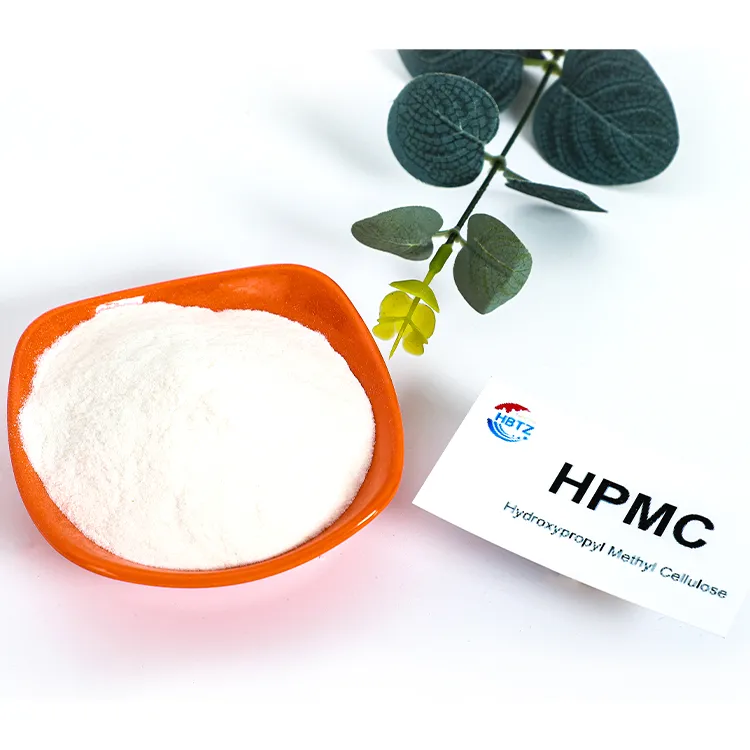
Hydroxypropyl Methyl Cellulose-Hebei Tangzhi Technology|Thickener, Stabilizer
Hydroxypropyl Methyl Cellulose (HPMC), with the CAS number 9004-65-3, is a high-performance multifunctional thickener and stabilizer. This innovative polymer is widely used across industries such as construction, medicine, food, and daily chemicals. Developed by Hebei Tangzhi Technology Co., Ltd., HPMC exemplifies the intersection of advanced material science and practical application, offering solutions that meet the evolving demands of modern manufacturing and consumer markets.

Figure 1: HPMC 00 - A high-purity form of Hydroxypropyl Methyl Cellulose.
Product Overview
HPMC is a semi-synthetic, cellulosic polymer derived from natural cellulose through chemical modification. Its unique molecular structure combines hydroxypropyl and methyl groups, enhancing its solubility, thermal stability, and film-forming properties. These characteristics make HPMC an indispensable component in formulations where viscosity control, moisture retention, and structural integrity are critical.
Key Features and Advantages
- High Performance: HPMC provides superior thickening and stabilizing effects, ensuring uniformity in products like paints, adhesives, and pharmaceuticals.
- Thermal Stability: It maintains its properties across a wide temperature range, making it suitable for both high- and low-temperature applications.
- Biocompatibility: As a non-toxic, biodegradable material, HPMC is safe for use in medical and food-grade applications.
- Cost-Effectiveness: Its versatility reduces the need for multiple additives, optimizing production costs.

Figure 2: Hpmc package1 - Standard packaging for bulk distribution.
Technical Specifications
| Parameter | Specification |
|---|---|
| Chemical Formula | [C6H7O2(OCH3)(OCH2CH2OH)]n |
| Molecular Weight | Varies (typically 40,000–1,000,000 g/mol) |
| Viscosity Range | 10–200,000 mPa·s (depending on grade) |
| Water Solubility | Highly soluble in cold water; forms gel in hot water |
| Heat Resistance | Stable up to 150°C |
Applications Across Industries
1. Construction
HPMC is a critical ingredient in cement-based products, such as tile adhesives, mortars, and renders. It improves workability, reduces water demand, and enhances the adhesion of coatings to substrates. According to the National Institute of Standards and Technology (NIST), advanced polymer additives like HPMC play a pivotal role in modern construction materials by optimizing performance and sustainability (NIST, 2023).
2. Pharmaceuticals
In the pharmaceutical industry, HPMC serves as a binder, disintegrant, and controlled-release agent in tablet formulations. Its ability to modulate drug release rates ensures consistent therapeutic effects. For example, HPMC is widely used in HPMC for sale to create enteric coatings that protect sensitive drugs from gastric acid.
3. Food Industry
As a food-grade thickener and stabilizer, HPMC is used in products like dairy alternatives, sauces, and baked goods. It prevents phase separation and maintains texture, aligning with the growing demand for plant-based and gluten-free options. China HPMC factory like Hebei Tangzhi Technology Co., Ltd. ensures compliance with global food safety standards, making their HPMC ideal for international markets.
4. Daily Chemicals
HPMC is a key component in personal care products, including shampoos, lotions, and toothpaste. Its film-forming properties enhance product consistency and provide a smooth application experience. For instance, HPMC buy from Hebei Tangzhi supports the development of eco-friendly formulations that meet consumer expectations for sustainability.
Company Background: Hebei Tangzhi Technology Co., Ltd.
Based in Hebei, China, Hebei Tangzhi Technology Co., Ltd. is a leading manufacturer of high-quality HPMC products. With years of expertise in polymer chemistry, the company has established itself as a trusted HPMC suppliers to clients worldwide. Their commitment to innovation and quality control ensures that their HPMC meets the rigorous demands of diverse industries.
Hebei Tangzhi Technology Co., Ltd. adheres to international standards for production and packaging, as highlighted in their HPMC price and HPMC for sale offerings. Their state-of-the-art facilities and R&D capabilities enable them to deliver customized solutions for clients seeking to optimize their formulations.
Conclusion
Hydroxypropyl Methyl Cellulose (HPMC) is a testament to the power of polymer science in addressing modern industrial challenges. From construction to pharmaceuticals, its applications are as diverse as its benefits. As a China HPMC factory, Hebei Tangzhi Technology Co., Ltd. continues to lead the way in providing reliable, high-performance HPMC products. For more information on HPMC suppliers or to explore HPMC price, visit their official website.
References
National Institute of Standards and Technology (NIST). (2023). Advancing Technology Through Innovation. Retrieved from https://www.nist.gov.
Keywords
-
Reliable Powdered Cellulose Supplier: Quality, Sustainability & InnovationNewsNov.24,2025
-
Find Trusted Microfibrillated Cellulose Suppliers for Sustainable Industrial SolutionsNewsNov.24,2025
-
Leading Methocel Suppliers: Quality, Innovation & Sustainability in Methylcellulose SupplyNewsNov.23,2025
-
Reliable Hydroxyethylcellulose Suppliers for Industry & Sustainability | Tangzhi HPMCNewsNov.23,2025
-
Top Ethyl Cellulose Supplier – Quality, Sustainability, and Industrial SupportNewsNov.23,2025
-
Trusted CMC Powder Suppliers for Food, Pharma & Industrial Use | Tangzhi HPMCNewsNov.22,2025





















